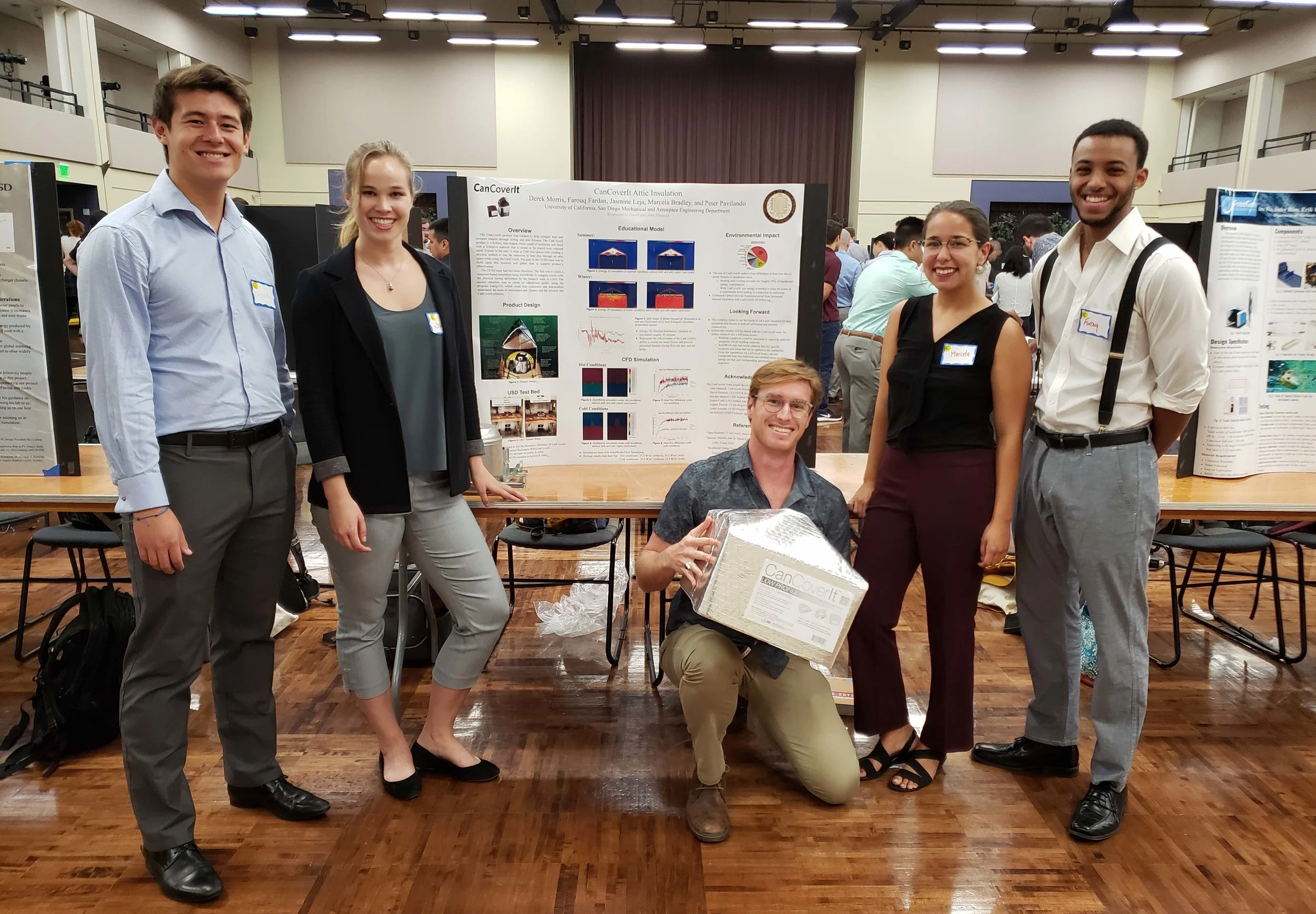Sponsors San Diego State University MBA Student Team
Through connection facilitated by the Southern California Energy Innovation Network (SCEIN), CanCoverIt was proud to sponsor a San Diego State MBA student final project. This class is called MBA 795 and has a rich lineage at the SDSU Fowler School of Business hosting luminary companies both large and small.
CanCoverIt Accepted to Join Southern California Regional Energy Network (SCEIN)
CanCoverIt has been accepted into the Southern California Energy Innovation Network (SCEIN) a free program for startups that are developing solutions to help California meet its energy goals. CanCoverIt was accepted into the Energy Efficiency category after pitching successfully to the panel of judges.
CanCoverIt has created a unique attic insulation product that provides fast, easy, and comprehensive protection of all metal ceiling fixtures –from can-lights to exchange fans and more– for maximum building energy efficiency, comfort, and safety.
The program provides access to the resources and facilities of a number of regional partner organizations (listed below) and connections with industry in order to accelerate the commercialization of emerging energy technologies.
To date, 35 energy startup companies have been accepted into the SCEIN program. Together, these companies employ more than 172 people and have raised $46.5 million of private capital and $2.2 million of public funding.
The program is the result of a five-year, $5 million grant from the California Energy Commission awarded in 2016 to advance the San Diego region’s energy innovation industry.
We are honored and looking forward to working with the incredible Program Manager Marty Turock and Project Manager Alyssa Gutner-Davis and all the collected resources and networks.














Through CanCoverIt’s involvement in the Southern California Regional Energy Innovation Network (SCEIN) we have sponsored two student teams to study the benefits of CanCoverIt protection for metal attic fixtures.
In a SCEIN first, CanCoverIt orchestrated University of San Diego (USD) and University of California San Diego (UCSD) into one study consisting of two parallel operations.